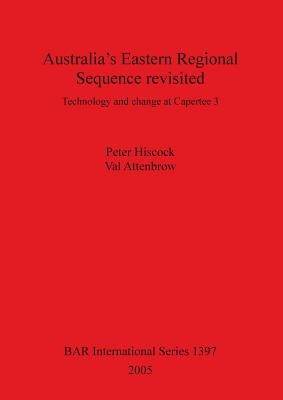
- We will send in 10–14 business days.
- Author: Peter Hiscock
- Publisher: British Archaeological Reports Oxford Ltd
- Year: 2005
- Pages: 170
- ISBN-10: 184171836X
- ISBN-13: 9781841718361
- Format: 21 x 29.7 x 1.2 cm, softcover
- Language: English
- SAVE -10% with code: EXTRA
Reviews
Description
This monograph represents a new step in Australian archaeology. It presents a detailed quantitative, technological analysis of flaked stone artefacts, of a kind not published previously in Australia. The detailed nature of the analysis reflects the measurement of a large number of variables on each specimen, as well as the use of those measurements in an extended study of the archaeological patterns. The detail of these analyses can be judged by the fact that the monograph deals with only one archaeological assemblage: the stone artefacts from Capertee 3, a site excavated in the Blue Mountains immediately west of Sydney. This volume develops and tests models of artefact variation and production to an extent not seen before in Australia. More importantly, the analysis of data involves the statistical interrogation of quantitative measurements and is designed to reveal the magnitude and direction of morphological variation within the assemblage. The technological approach adopted allows for the first time in Australian archaeology an evaluation of the nature of changes in the manufacture of retouched flakes in a sequence spanning the entire Holocene. This evaluation enhances current understanding of cultural change in Holocene eastern Australia by allowing the testing of a number of propositions about the rate and uniformity of change in archaeological assemblages. In particular these analyses initiate a review of models of the Eastern Regional Sequence by creating a record of the stoneworking processes in one of the key archaeological sites that define the purported Eastern Regional Sequence.
EXTRA 10 % discount with code: EXTRA
The promotion ends in 20d.22:54:58
The discount code is valid when purchasing from 10 €. Discounts do not stack.
- Author: Peter Hiscock
- Publisher: British Archaeological Reports Oxford Ltd
- Year: 2005
- Pages: 170
- ISBN-10: 184171836X
- ISBN-13: 9781841718361
- Format: 21 x 29.7 x 1.2 cm, softcover
- Language: English English
This monograph represents a new step in Australian archaeology. It presents a detailed quantitative, technological analysis of flaked stone artefacts, of a kind not published previously in Australia. The detailed nature of the analysis reflects the measurement of a large number of variables on each specimen, as well as the use of those measurements in an extended study of the archaeological patterns. The detail of these analyses can be judged by the fact that the monograph deals with only one archaeological assemblage: the stone artefacts from Capertee 3, a site excavated in the Blue Mountains immediately west of Sydney. This volume develops and tests models of artefact variation and production to an extent not seen before in Australia. More importantly, the analysis of data involves the statistical interrogation of quantitative measurements and is designed to reveal the magnitude and direction of morphological variation within the assemblage. The technological approach adopted allows for the first time in Australian archaeology an evaluation of the nature of changes in the manufacture of retouched flakes in a sequence spanning the entire Holocene. This evaluation enhances current understanding of cultural change in Holocene eastern Australia by allowing the testing of a number of propositions about the rate and uniformity of change in archaeological assemblages. In particular these analyses initiate a review of models of the Eastern Regional Sequence by creating a record of the stoneworking processes in one of the key archaeological sites that define the purported Eastern Regional Sequence.


Reviews